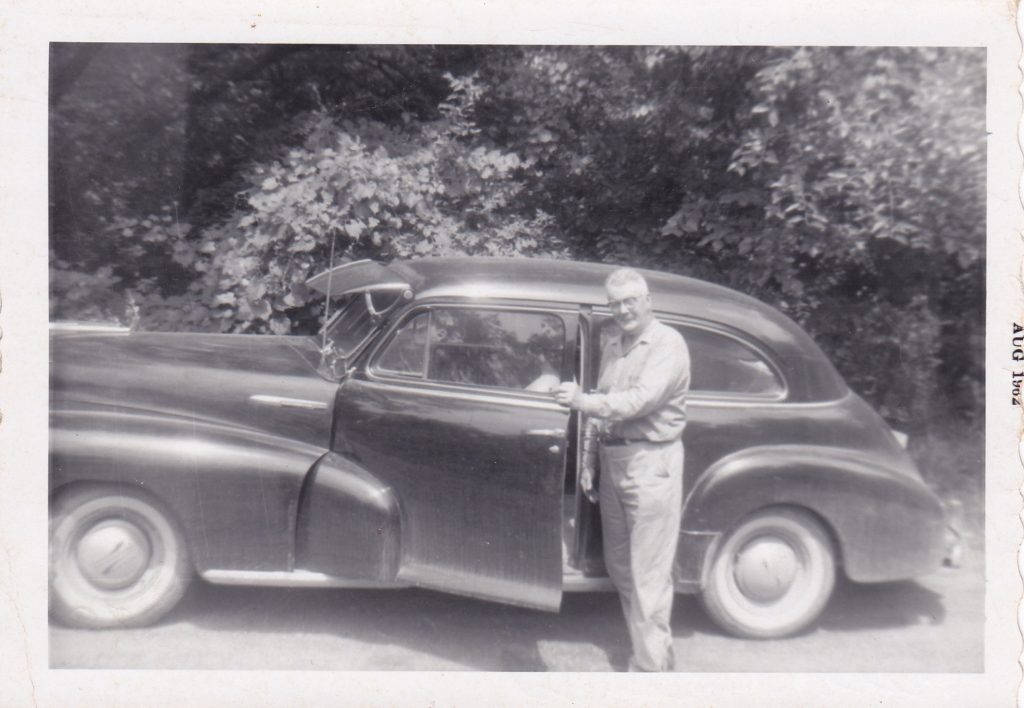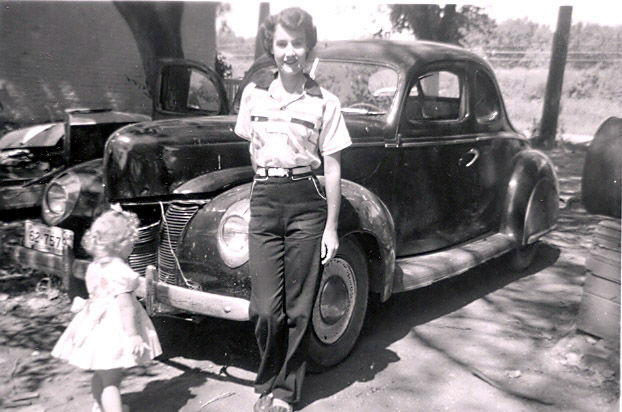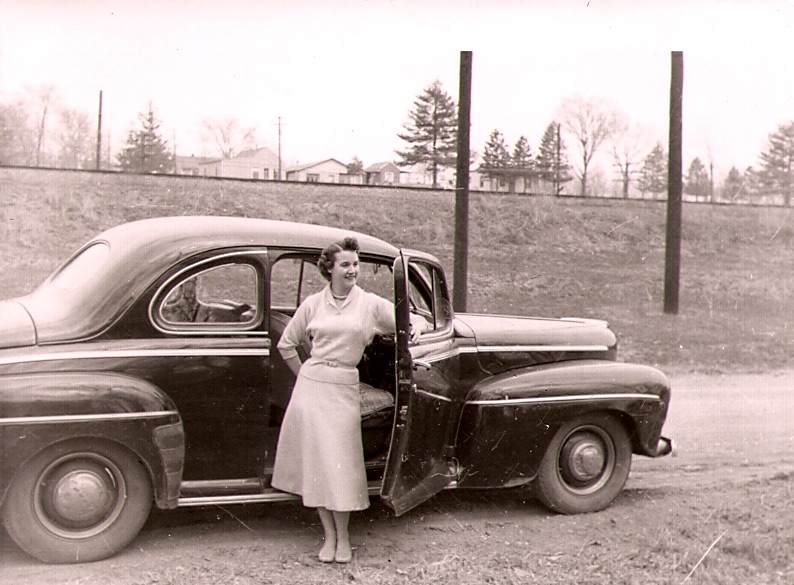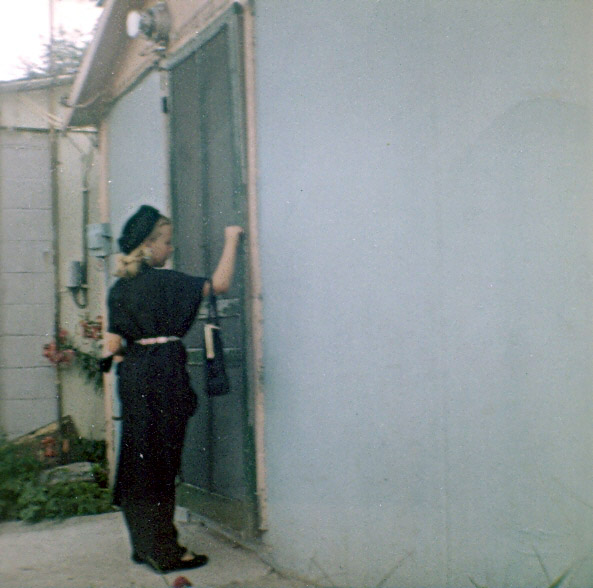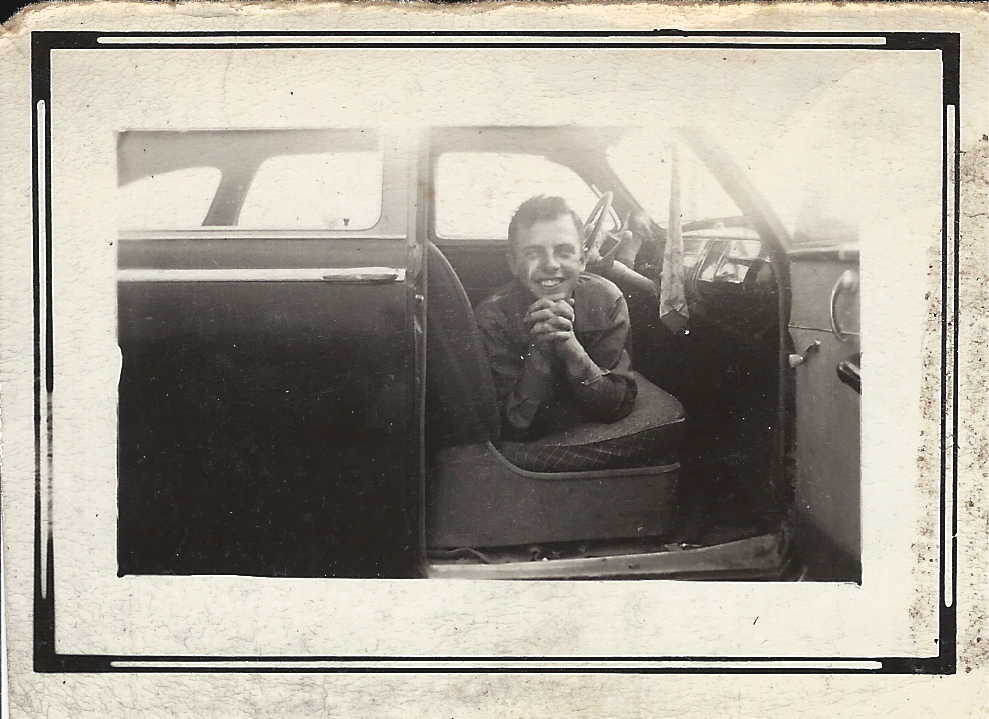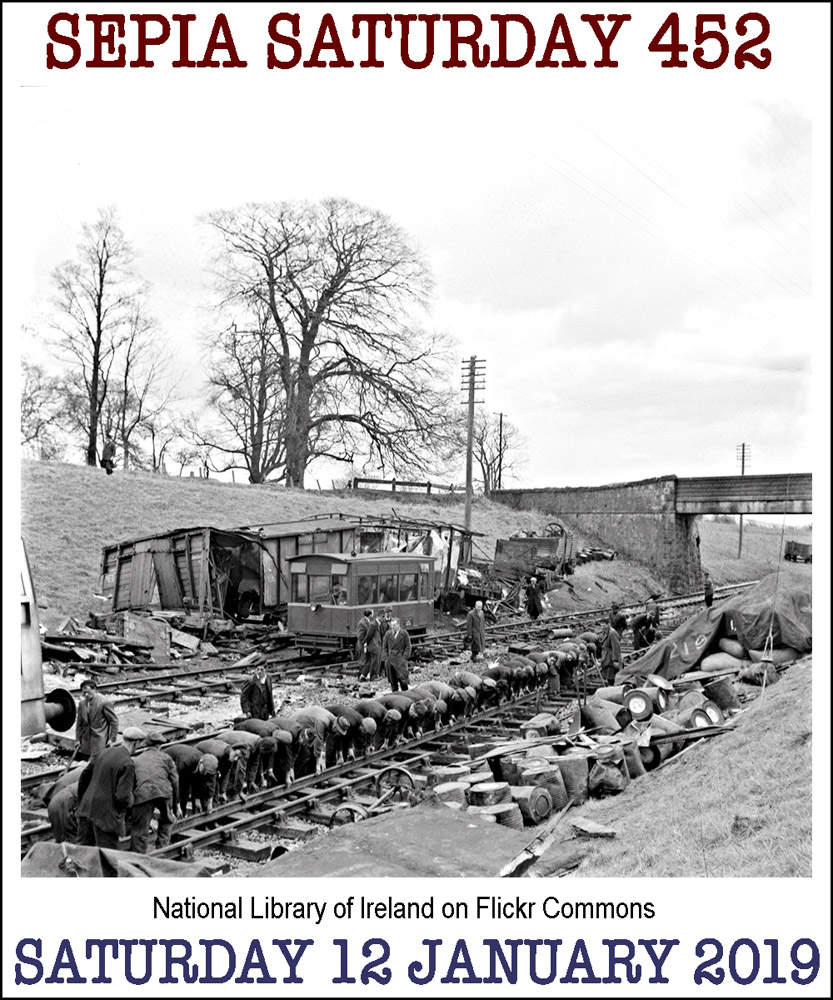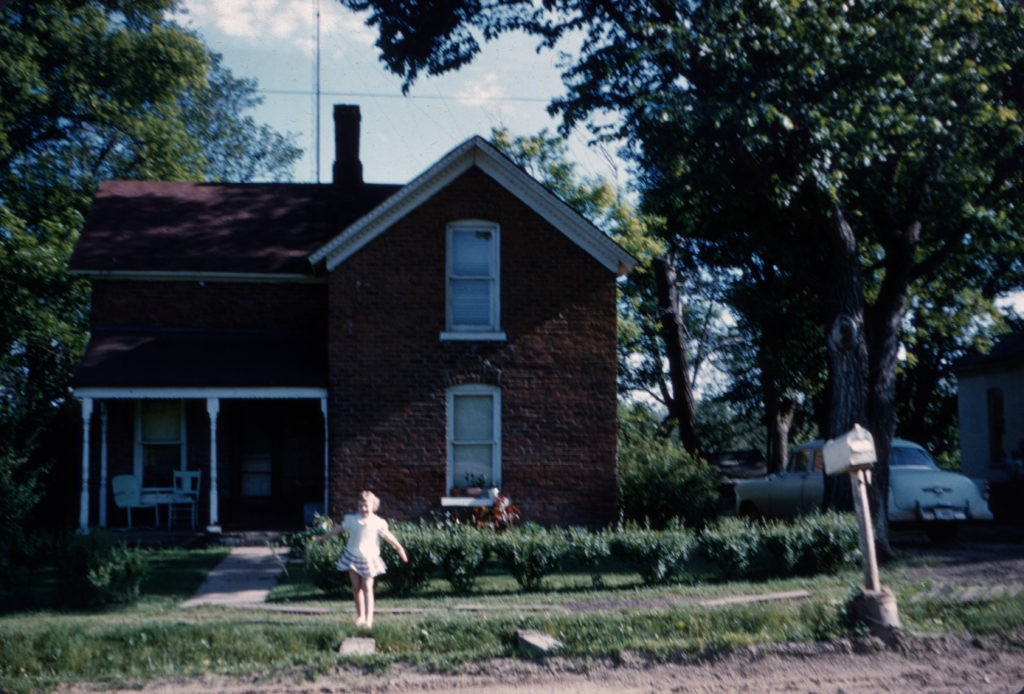Sepia Saturday provides bloggers with an opportunity to share their history through the medium of photographs. Historical photographs of any age or kind become the launchpad for explorations of family history, local history and social history in fact or fiction, poetry or prose, words or further images. If you want to play along, sign up to the link, try to visit as many of the other participants as possible, and have fun.
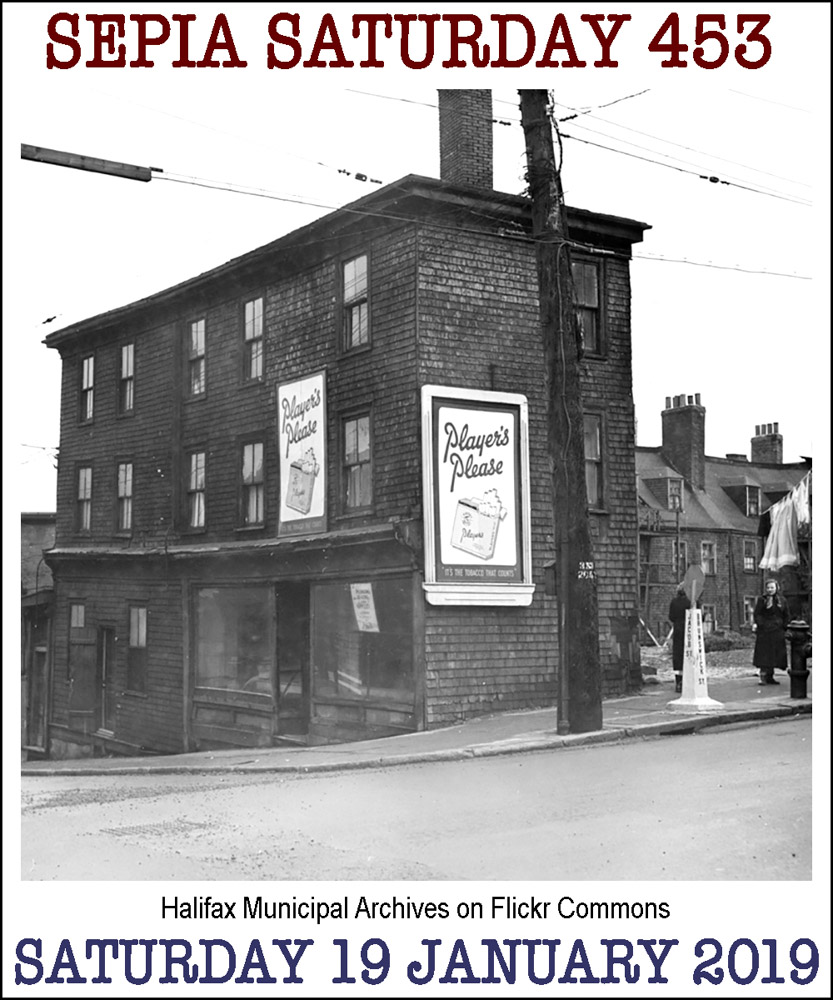
I lived the first two years of my life at a truck stop. I might also include the time I was growing in my mother’s womb. My grandparents, Charles and Abbie Smith, owned the truck stop; I think we lived upstairs. My dad had a motorcycle business on the same property.
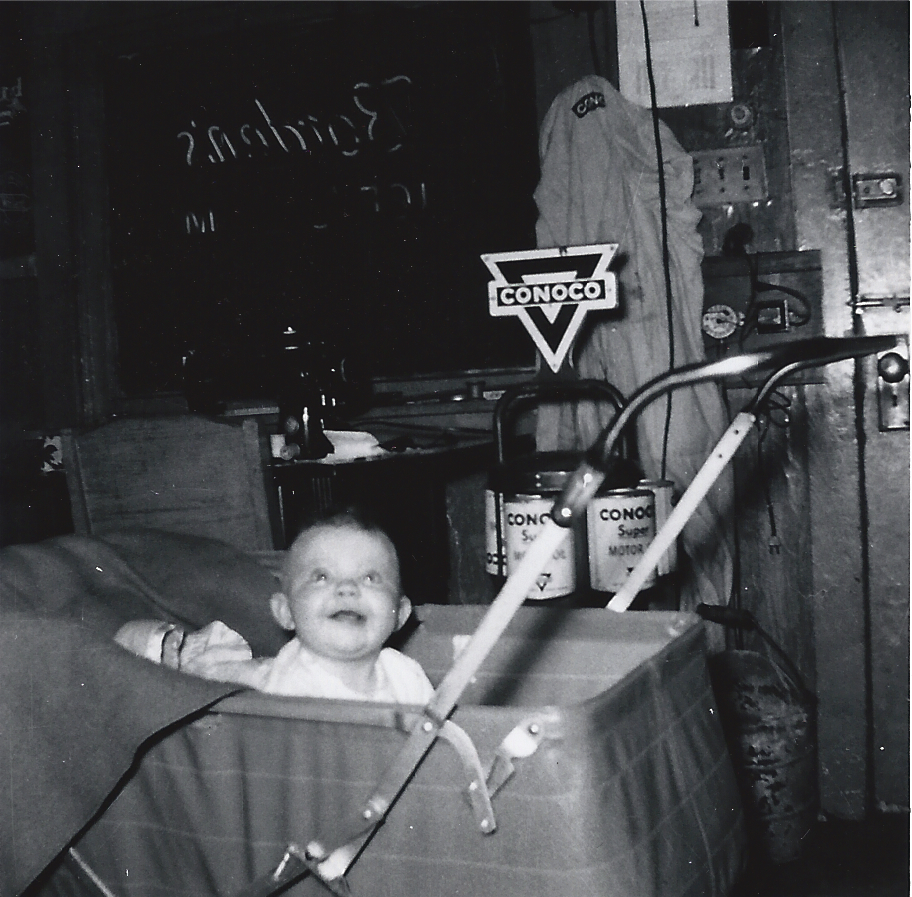
After my parents’ divorce, I spent every other Saturday at my grandparents’ truck stop. Saturdays were supposed to be time with my dad, but it was more fun and more appropriate for a little girl to be supervised most of the day by her grandmother. Grandma Abbie managed the inside of the truck stop – serving coffee, cooking diner fare, waiting on customers, washing dishes, selling groceries and cigarettes and whatever else truck drivers and travelers and local farmers might need or want.

I looked forward to being old enough to help my grandfather outside – pumping gas or asking customers what kind of gas they wanted. Regular or ethyl? I thought it would be funny to ask, “Lucy or Ethel?”

My mother and I lived with her parents and I spent my days following my grandmother Hoskins around and helping her. We lived in Iowa and winters were cold. During the winter, the house was primarily heated by a large coal burning heater that stood in the living room. On cold winter mornings, my grandmother would lay my clothes for the day on the coal stove to warm them, then carry them upstairs to me to ease my transition out of my warm bed into the chilly room. That’s the coal heater on the far left, although it is not the one I remember. Perhaps it was replaced for a newer model. There was an oil burning heater in the kitchen, but I don’t remember it being used as much.
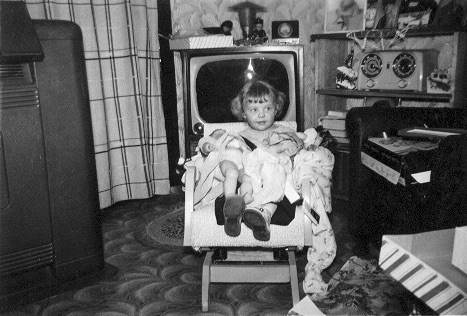
This was the general pattern of my life until my mother remarried when I was seven and we moved away.
After we moved away, I spent a month every summer and every other Christmas with my father. By then, my dad had a small house on the property next to the motorcycle business. I would spend most of my days at the business – where my dad was, often hanging out in the repair shop where engines and mufflers were worked on and engines were revved to listen to the inner workings.
Sometimes I played at office work…
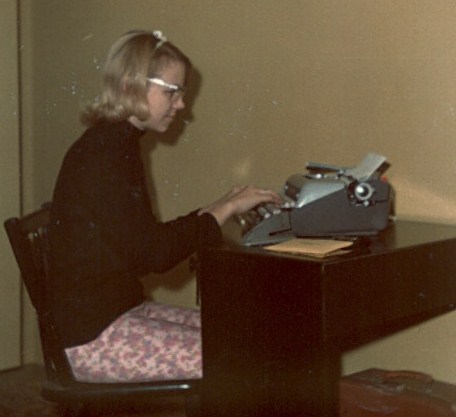
or played pinball (free for me!) in the show room and, when I was older, I helped assemble Hondas out of the shipping crates. We went almost everywhere by motorcycle and attended many motorcycle races and hill climbs. Sometimes my dad was a participant.
There were go-cart races on Saturday nights on the property behind the business. And I would ride a Honda 90 around and around the track on long summer days. The property itself was surrounded by cornfields.
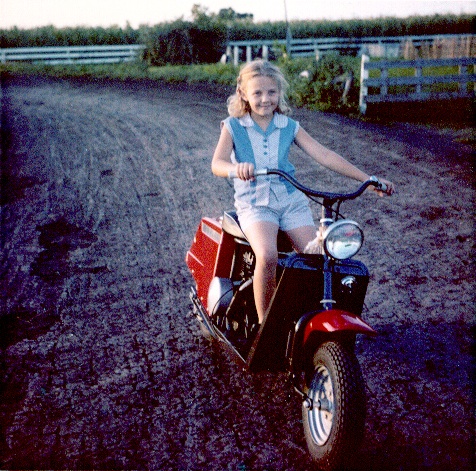
Less than a year before my mother remarried, my grandfather Charles died of cancer. I remember him as a smoker, yet I have no memory of seeing him smoke or of any photographs that indicate that he was a smoker. Perhaps this is a false memory that a six-year-old child created after hearing that her grandfather had “three kinds of cancer,” having a vague memory of her last visit to him in his bed at home with what seemed to be a large wound in his chest, and knowing that smoking causes lung cancer and that the wound was approximately where his lungs were. I suppose I should verify my memories with someone.

I don’t have a lot of clear memories of time with my grandfather, but photographs show, and my feelings confirm, that I felt love and affection and ease with him.

I didn’t think I’d participate in Sepia Saturday this week. I was supposed to be in the hospital undergoing a complex surgery today and have had other things on my mind. But I caught a cold, had a fever two nights ago, and my surgery has been postponed. So here I am.
I didn’t know what to do with the prompt photo, but the last couple of days I’ve been pondering why I seem to be a cancer maker (three times now) when there is so little cancer in my family. One grandfather, who I would assume developed cancer due to environmental toxins. Grandpa Charles was a farmer for many years, then he purchased the truck stop and pumped gas every day. So whether or not he was a smoker (prompt photo connection), there were certainly cancer causing agents in his life. One first cousin had a lymphoma. And my mother’s sister died of cancer. That’s it. Not any of my sisters or parents or other cousins or other aunts and uncles. Just these three.
My first cancer was nothing. It was cured before it was diagnosed. I had a large nodule on my thyroid and the doctor said it had to come out whether or not there was any cancer. The biopsy confirmed cancer, but the doctor said it was so small that it could easily have been missed in the biopsy.
About five years later, I was diagnosed with a very rare and aggressive Non-Hodgkins lymphoma.
The other day, something popped up on my Facebook feed about blood cancers and I decided to read it. It linked several blood cancers, including Non-Hodgkins lymphoma with exposure to benzene. Where does one find benzenes?
From The American Cancer Society:
“The highest exposures have typically been in the workplace, although these have decreased greatly over the last several decades due to federal and state regulations. Some other exposures have also gone down over time, such as the amount of benzene allowed in gasoline…
… Other people who may be exposed to benzene at work include steel workers, printers, lab technicians, gas station employees, and firefighters. Federal regulations limit exposure to benzene in the workplace …
… Areas of heavy traffic, gas stations, and areas near industrial sources may also have higher air levels …
…Cigarette smoking and secondhand smoke are important sources of exposure to benzene. Cigarette smoke accounts for about half of the exposure to benzene in the United States. Benzene levels in rooms containing tobacco smoke can be many times higher than normal.
Benzene is known to cause cancer, based on evidence from studies in both people and lab animals. The link between benzene and cancer has largely focused on leukemia and other cancers of blood cells.”
A document created by the EPA contains the following:
“Benzene is found in emissions from burning coal and oil, motor vehicle exhaust, and evaporation from gasoline service stations and in industrial solvents. These sources contribute to elevated levels of benzene in the ambient air, which may subsequently be breathed by the public.”
Other sources I read included exposure to weed killers.
I didn’t mention that I also worked for ten years with a boss who smoked like a chimney. I shared office space with her and later spent many hours in her private smoke-filled office. Once I became pregnant, I refused to go into her office.
And now, about five years after my lymphoma diagnosis, here I am with ampullary cancer – hopefully caught early enough for the primary treatment – a major abdominal surgery commonly known as a Whipple procedure. Whether I will need further treatment depends on what the surgeon finds when he gets in there.
I have no evidence that my exposures to benzene at such a young age has anything to do with my cancers, but it is something I’ve been thinking about. Perhaps there is some genetic predisposition. My family doctor suggested to me today that I should surely qualify for genetic testing with my history. (I am the only child of this union. All of my siblings are half sisters.) Perhaps there is a toxic mix – a genetic pre-disposition paired with a trigger. Who knows? Some questions have no clear answer.
In any case, I hope we can get back to protecting our environment and ourselves from the many, many toxins that impact our health.
If I’m MIA from my blog and from Sepia Saturday for a while, you know why. Once I have surgery, I’ll be in the hospital about a week and then have a another 6-8 weeks of recovery at home. Hopefully, I’ll have a brain that functions reasonably well and a level of comfort that will allow me to keep up here.
I apologize for the rather morbid content of my post, but it is what I am thinking about today.
A prompt photo that features cigarette advertisements and a building in disrepair.
Please visit other participants who have surely posted fun photos and interesting takes on the prompt by clicking this link: Sepia Saturday.


